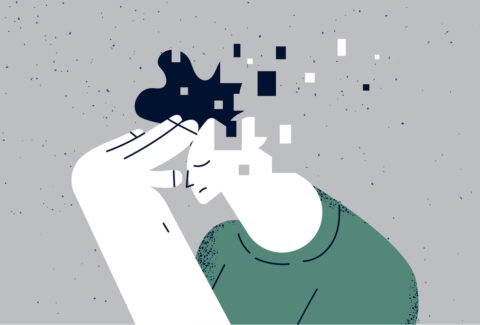How Therapists Can Help Clients Love Themselves

How Therapists Can Help Clients Love Themselves
“The Looking Glass Technique” is a therapeutic practice that is based on the application of neuroscience and the science of cognition and behavior. Simply put, thanks to neuroplasticity—or the brain’s ability to change and grow over time—we can direct our brain toward growth in both concrete and abstract domains. For instance, we can direct our brain toward getting really good at playing the piano (concrete); we can also direct our brain toward developing a more accepting sense of self (abstract).
Why Try the Looking Glass Technique?
The Looking Glass Technique, when implemented properly, can help individuals direct their brain towards self-love, self-forgiveness, and self-commitment. As such, the Looking Glass Technique can be seen as an adjunctive tool and can be used with any type of psychosocial or psychotropic intervention.
The rationale for the technique:
- Thousands of studies in cognitive and behavioral, science reliably reveal a close link between our belief systems, our feelings, and our behaviors [3]
- Our beliefs about ourselves, our past, other people, the world, and the future hugely determine how we feel and how we behave—at least most of the time [4]
- Any intervention that fails to address these types of beliefs will likely limit the effectiveness of other types of interventions
- Having the Looking Glass Technique at one’s disposal means that individuals will have a tool that they will be able to perform anytime, anywhere, with expected results.
Who Is This Technique For?
The Looking Glass Technique can be tailored to the individual and/or to a specific symptom or condition. It can be adjunctively used to address symptoms of depression, trauma, or feelings of emptiness, inadequacy, and “stuckness,” among other difficulties.
What Are the Benefits and Risks?
Among its many benefits, the Looking Glass Technique can help lead to an increase in:
- Self-love
- Self-forgiveness
- Self-image
- Self-esteem
- Self-confidence
- Self-efficacy
This exercise, however, is not without risk. It may bring up lots of suppressed or repressed emotions, which can then be expressed in the form of:
- Tearfulness
- Transient sadness
- Transient discomfort
As such, the presence of a clinician is strongly recommended the first time the client is doing this exercise.article continues after advertisement
How the Technique Works
The following are some concrete steps to follow to practice this simple yet powerful technique:
- The patient stands in front of a mirror and looks themselves in the eyes.
- The patient says his or her name.
- The patient says, “I love you.”
- The patient repeats steps 2 and 3 a total of three times.
- The patient repeats the process, replacing “I love you” with “I forgive you.”
- The patient repeats the process, replacing “I love you” with “I am committed to you.”
Recommendations for Patients
- After saying his or her name, the patient should wait for three seconds before saying, “I love you,” “I forgive you,” or “I am committed to you.”
- After each sentence, the patient should wait for three seconds before moving on to the next one.
- While waiting, the patient should pay attention to how they are feeling, both emotionally and physically.
- When performed for the first time, possible responses include: “This feels silly,” “It feels awkward,” and “It feels childish.” These are normal defensive-based responses. To move past them, the patient can remind herself that she has nothing to lose, and it may be worth giving it a try. The exercise’s simplicity is deceiving. This is true for most interventions in CBT, MCBT, DBT, MDBT, ACT, or any other evidence-based intervention.
How Clinicians Can Introduce the Looking Glass Technique
Are you a clinician who is wondering how you could introduce the Looking Glass Technique to your clients? If so, here’s an excerpt of a hypothetical clinician-client encounter that you can use as your guide:
Note: There are several ways to introduce this technique to your clients. The following script is only one example.
Clinician: Loving oneself is something that some individuals pay attention to, while others do not. Now, I have a question regarding that. Can you tell me the last time you said, “I love you” to yourself?
Patient: I don’t know/It’s been a long time/I don’t remember when/I never have/This sounds weird/I didn’t know I had to say, “I love you” to myself.
C: Tell me what would happen if you were to tell yourself, “I love you.”
P: Oh, I don’t know/That would sound weird/Who knows?
C: What would take for you to say to yourself, “I love you”?
P: Well, I can try to say that. “I love you.”
C: Great. Tell me if you’d like to try this again, addressing yourself directly this time.
P: Sure. “Elizabeth, I love you.”
C: Tell me how it would feel like if you said your name but then waited 3 seconds before you said, “I love you,” and then waited for three seconds again before you repeated the cycle.
P: Sure. That’s fine. I can do that.
C: Great. Can you tell me how everything feels so far?
The patient will share how the technique makes them feel.
C: Would you be open to doing this in front of a mirror? You could look yourself in the eyes, say your name, wait 3 seconds, then say “I love you,” wait 3 more seconds, and then restart the cycle up to three times.
P: Well, I can try.
C: Thank you. Now, tell me how often you’d like to do this during the day.
P: I don’t know. How often should I do it?
C: Great question, Elizabeth. For the best possible answer for you, let’s take a deeper look at the situation. Which parts of the day would you most likely like doing this?
P: Well, perhaps, in the morning, when I am getting ready for work. I think that might be a good time. Who knows?
C: Perfect. I think so, too. So, you’d be able to start doing that in the morning while getting ready for work. Tell me what other times during the day.
P: Well, I think that’s it for now.
C: That sounds optimal, Elizabeth. For now, once a day, in the morning, while getting ready for work may be ideal. Great. I look forward to hearing about how it went at our session next week.
As you can see, only the first of the three prompts of the Looking Glass Technique was introduced to the client in the above example. This is because it may be best to help your clients become familiarized with one part of the exercise at a time. This will help them ease into the practice with the least amount of unconscious resistance possible.
The next time the client comes back to your office, you will assess how well he did with the first part of the technique and how it made him feel. Then you will proceed with introducing the second prompt of the technique, which is, “I forgive you.” Your client will then go on and practice the two prompts of the technique together until the third prompt is introduced.
We look forward to hearing about your clients’ experience with the Looking Glass Technique. Meanwhile, thank you for taking a stand to help end suffering in the world.
[1] Cramer, Steven C., et al. “Harnessing neuroplasticity for clinical applications.” Brain 134.6 (2011): 1591-1609.
[2] Berger, Shelley L., et al. “An operational definition of epigenetics.” Genes & development 23.7 (2009): 781-783.
[3] Dobson, Keith S., and David JA Dozois. Historical and philosophical bases of the cognitive-behavioral therapies. Guilford Press, 2010.
[4]Catlin, George, and Seymour Epstein. “Unforgettable experiences: The relation of life events to basic beliefs about self and world.” Social cognition 10.2 (1992): 189-209.






